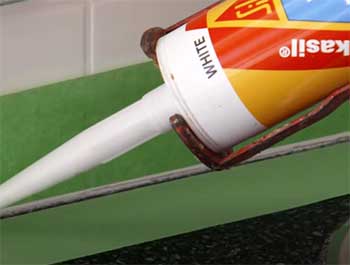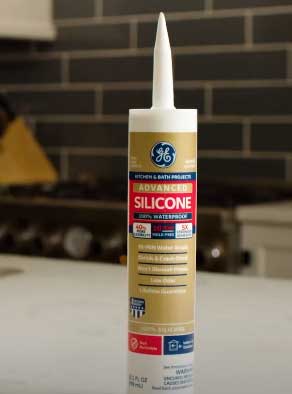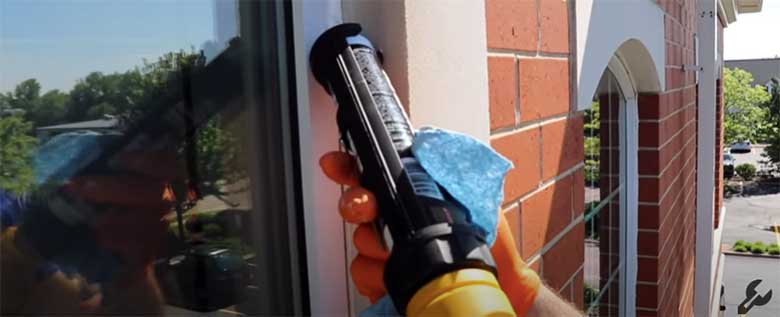Are you looking for a sealant that is waterproof and stays forever?
How about I give you two names, and you choose the best one? For that, you must read my Dynaflex 230 vs. silicone review.
Both of them are industry-leading sealants having superior formula and impeccable performance. In this article, I will discuss their features and compare them with one another, allowing you to decide on the right product for your project.
So, let’s jump right in.
A Quick Comparison Table
A quick comparison table will tell you the differences between these sealants with just a glance. You can quickly make up your mind, especially if you are short on time.
Both Dynaflex 230 and Silicone are manufactured by Dap Global Inc., a manufacturer, and supplier of sealant, adhesive, caulks, foams, etc. It was founded in 1865 and had been providing high-quality products since then.
Here is a quick comparison table between Dynaflex 230 and Silicone:
| Aspects | DynaFlex 230 | Silicone |
| Type | Latex-Based | Silicon-Based |
| Special Feature | Paint Ready In 2 Hours | Rain Ready In 30 Minutes |
| Benefits | Easy Water Clean-Up | Mold & Mildew Resistant |
| Usage | Window, Door, Trim & Siding Sealant | All-Purpose |
| Colors Available | 10 Colors | 5 Colors |
| Size Available | 10.1 Ounce | 2.8 Ounces and 10.1 Ounces |
Key Differences Between Dynaflex 230 And Silicone

Dynaflex 230 is a premium elastomeric sealant offering outstanding silicone uncompromising performance against the elements.
This sealant can endure expansion and contraction with flexibility and crack-proof performance without cracking or losing its seal.
Silicone is a premium all-purpose sealant for max flexibility. This sealant can withstand extreme expansion and contraction caused by weather and temperature with its strict adhesion.
Let’s dive deeper.
- Type
Featuring latex-based sealant, Dynaflex 230 is paintable. Use it to seal places where you need painting.
Although it lasts the longest and holds up pretty well, it can be a real mess being very hard to apply. So, you should hire an expert hand to apply it.
On the contrary, Silicone, as the name suggests, is a silicone-based sealant. Having twice the joint movement capability of Dynaflex 230 or any other sealant for that matter, Silicone will last very long.
Besides, you won’t require any painting on it.
- Features
Dynaflex 230 becomes paint-ready in 2 hours after applying, and you can seal joints up to 2 inches wide with it. Being 100% waterproof and weatherproof, you can use this sealant in the interior and exterior. Besides, it exceeds ASTM C920, Class 25 requirements.
On the other hand, being rain-ready in just 30 minutes, Silicone sealant offers maximum flexibility and adhesion. With 100% waterproof and weatherproof and other superior features, it also meets ASTM C920, Class 50 requirements.
- Benefits
Because of its excellent waterproofing and weatherproofing elements, you can use Dynaflex 230 for your home’s exterior and interior. Besides, you will get silicon-tough crack-proof performance and super flexibility.
Moreover, this low odor sealant is pretty easy to wash using water.
Silicone is well-known for its uncompromising adhesion and excellent flexibility. This low odor sealant protects surfaces from mold and mildew and won’t give you any crack or shrink.
- Usage

Dap has designed Dynaflex 230 as a sealant for windows, trim, siding, and doors. With its waterproof and weatherproof performance, it can stand any wet area.
But you cannot use this sealant near food and drinking water as it might contaminate them.
In contrast, you can use Silicone for windows, trim, siding, doors, flashing, gutters, vents, pipes, etc. Most importantly, being waterproof and weatherproof, you can use it in your bathroom and kitchen as well.
It won’t contaminate your food and drinking water.
- Available Sizes
Size is an essential factor allowing buyers to choose according to their needs. But unfortunate as it may, Dynaflex 230 is only available in one size. It comes with a 10.1 ounces cone.
By contrast, you will find two size options for Silicone, allowing you to choose between a 2.8 ounce and 10.1 ounces cone.
- Available Color
Color can be another determinant factor for many buyers. Dynaflex requires painting and is available in various colors. White, Clear, Almond, Black, Gray, Cedar Tan, Clay, Brown, Dark Bronze are the colors you choose from
On the contrary, the colors of Silicone depend on its size. You will get only Clear Silicone in its 2.8-ounce cone.
However, the 10.1-ounce cone is available in Clear, White, Light Grey, and Black colors.
- Adhesion
Dynaflex 230 bonds well to a wide range of common porous and non-porous building materials, allowing versatile usage both indoors and out. Meanwhile, silicone mainly creates an optimal grip on non-porous substrates like glass, metal, plastic, fiberglass, and masonry.
So Dynaflex works better for general purpose use on diverse surfaces like wood, drywall, concrete, vinyl siding, stucco, and more. Silicone’s finicky adhesion limits its use on porous materials, but makes it ideal for sealing windows, doors, sinks, showers, appliances, and similar non-porous fixtures.
- Paintability
Acrylic latex caulks like Dynaflex 230 have the advantage of water-based paint adhesion once fully cured. This means the sealant can be easily painted over to match surrounding trimwork. Meanwhile, paint does not bond well to silicone caulk, preventing a color-matched finish.
So for sealing gaps along baseboards, crown molding, door and window frames, siding, and other visible areas, Dynaflex 230 is the better choice if you want to disguise the sealant line with a fresh coat of paint after application.
- Water Resistance
While Dynaflex 230 provides decent water resistance, silicone offers superior protection against leaks and moisture infiltration. Thanks to its hydrophobic properties that prevent water bonding, silicone caulk forms a fully impenetrable water barrier once cured.
For most household water sealing tasks like kitchen sinks and backsplashes,Dynaflex 230 works sufficiently. But for areas with prolonged water exposure like bath/shower joints, aquariums, or outdoor sealing jobs, a silicone caulk is the safest bet to prevent leaks, mildew risks, and water damage long-term.
- UV Resistance
Silicone maintains its integrity better than Dynaflex 230 when exposed to extended sunlight and outdoor weathering. Over time, silicone remains flexible and adhered while acrylic latex becomes brittle and shrinks as plasticizers evaporate.
So for applications like sealing outside vents, flashing, plumbing, HVAC systems, skylights, and areas getting heavy sun exposure, silicone has the longevity advantage. Dynaflex 230 works for shorter-term outdoor projects, but silicone is built to withstand outdoor UV and temperature extremes longer.
- Temperature Resistance
Thanks to its silicone polymer structure, silicone caulk maintains far more stable flexibility compared to Dynaflex 230 across extreme temperature fluctuations from summer heatwaves to winter freezes.
While Dynaflex remains usable across a decent 0°F to 150°F range, silicone truly excels from -55°F up to a whopping 500°F temperature span.
This gives silicone a clear performance edge for both cold and hot weather exterior sealing jobs. Dynaflex will work for less extreme indoor and outdoor temperatures in temperate climates. But silicone has the temperature flexibility advantage on hot attic vents, cold chimneys, plumbing penetrations, and outdoor gaps prone to expansion and contraction.
- Applicable Surfaces

Due to its acrylic latex base, Dynaflex 230 works well on common porous and non-porous building materials for versatile usage.
Silicone, on the other hand, has limited adhesion primarily to non-porous substrates.
So Dynaflex 230 works better as an all-purpose caulk for diverse DIY repairs on woodwork, drywall, concrete, stucco, vinyl, and other porous AND non-porous surfaces.
Meanwhile, silicone excels strictly for non-porous adhesion on glass, metal, ceramic tile, fiberglass, plastic, and masonry jobs where its waterproofing and flexibility are invaluable.
- Durability
On average, a Dynaflex 230 bead should provide a reliable seal for around 10-15 years once applied. However, a quality silicone caulk boasts exceptional longevity, often maintaining its flexible waterproofing seal for 20-30 years or longer without drying, shrinking, or cracking. So silicone ultimately provides a more permanent seal.
- Cost Effectiveness
Due to its cheaper base ingredients, Dynaflex 230 acrylic latex caulk costs significantly less per ounce than 100% silicone. Dynasty 230 typically runs around $0.30 per ounce, while quality silicone costs closer to $1 per ounce depending on brand and volume.
So if you need to seal a larger volume of gaps on a budget, Dynaflex 230 provides very affordable versatility for most porous and non-porous surfaces. Meanwhile, silicone makes the most sense for specialized waterproofing/flexibility needs on key joints despite higher initial costs.
When To Use Dynaflex 230 And Silicone?
Now that you know the difference between these two flexible caulking options, when’s the right time to use each?
Here are some guidelines on optimal use cases:
Use Dynaflex 230 For:
- General purpose sealing for cracks and gaps both indoors and out
- Paintable caulking bead for seamless finish on baseboards, trim, siding
- Porous and non-porous surface adhesion versatility
- Kitchen and bathroom caulking needs
- Concrete/masonry cracks and penetrations
- Window/door installation and weathersealing (short term)
- Temperature resistance from 0°F to 150°F
Use Silicone For:
- Superior waterproofing and leak protection
- Extreme joint movement and vibration flexibility
- Tenacious non-porous surface adhesion
- Cold/hot weather resistance from -55°F to 500°F
- Prolonged UV/sunlight exposure outdoors
- Glass, tile, metal and sinks/showers
- Permanent flexibility for 20-30+ year durability
As you can see, both Dynaflex 230 and silicone caulk offer performance advantages suited to different sealing applications.
For versatile porous/non-porous adhesion at a great value, Dynaflex 230 acrylic latex hits the sweet spot. It bonds well to common surfaces for reliable seals above and below grade.
Meanwhile, specialized 100% silicone truly excels for waterproofing non-porous materials under rigorous movement, vibration, UV and temperature extremes. It’s the ideal flexible problem-solver anywhere leaks, condensation risks, or lasting seals are paramount.
Which Sealant Is Best For You?

Here’s the most critical part: you have to decide on one most suitable product. With my detailed discussion on the features and differences between Dynaflex 230 and Silicone, you should clearly define the most suitable sealant.
However, let me clear it for you. Silicone will be the best option with its benefits and excellent performance because of its all-purpose usage.
You can use it inside and outside your home, but you can also use it in your bathroom and kitchen.
Frequently Asked Question (FAQ)
Dynaflex 230 is a latex-based sealant produced by Dab Global Inc. Although offering silicon-tough seals, it does not contain any silicone in it.
Dynaflex 230 is waterproof and designed for windows, doors, trim, etc. It can withstand any wet area, but it will be best for you not to use it for showers. You can choose Silicone sealant instead.
Dynaflex Ultra is a latex-based premium elastomeric sealant. It provides silicone-like toughness and performance but is not silicone-based.
Both Dynaflex Ultra and Dynaflex 230 is a latex-based sealants. But the former is more flexible, with a movement rating of class 35 compared to the latter having a class 25 movement rating.
Final Words
So, in the end, it all adds up to one conclusion: you cannot fail to choose the right sealant for the consequences it might present in the future. I’m glad that my Dynaflex 230 vs. silicone review came in handy for you.
With all the information, you can go out there and purchase the right product without a second thought.
